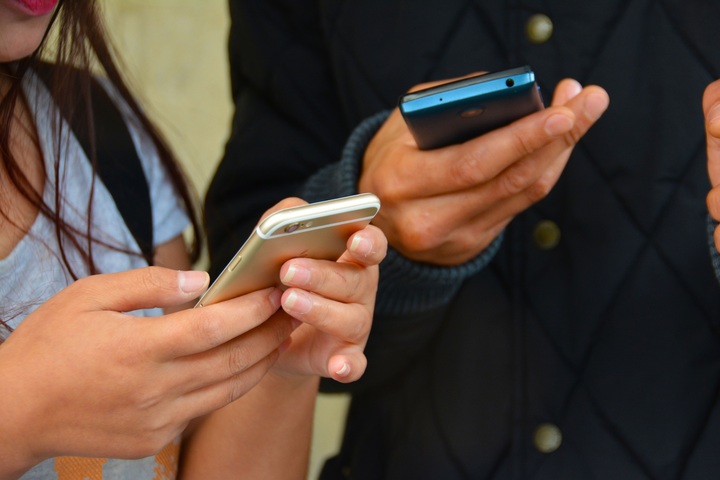
Por Pamela Cruz. Península 360 Press [P360P]
Los avances en la tecnología, el encierro debido a la pandemia y el creciente uso de dispositivos tecnológicos han provocado que cada vez sean más comunes las lesiones osteomusculares.
De acuerdo con Mauricio Ravelo Izquierdo, académico de la Universidad Nacional Autónoma de México ‒UNAM‒, han ganado terreno la tendinitis de Quervain y el text neck o dolor de cuello por «textear», que debido al malestar e inflamación que causan pueden ser sumamente incapacitantes.
Explicó que el primer síntoma es dolor leve, que de no atenderse puede volverse intenso, al punto de inmovilizar el área inflamada y provocar un aumento de temperatura y cambio de coloración.
En el caso de la mano, la molestia puede ir del pulgar a la parte media del antebrazo, y en el cuello desde la nuca hasta la parte trasera de los hombros; en algunos casos provoca lesiones en las terminaciones nerviosas que emergen de la columna cervical.
La enfermedad de Quervain, expuso el docente de la licenciatura en Fisioterapia, es una lesión que ocurre básicamente por la inflamación de dos tendones que se dirigen al pulgar: el extensor corto y el abductor largo.
No obstante, aseguró, estas afecciones pueden evitarse si se usa con prudencia el celular: por periodos no mayores a 30 minutos, y dejarlo de lado al menos una hora y media para que descansen la mano y el cuello.
Por su parte, la doctora Tamara Rozental, cirujana ortopédica que se especializa en trastornos de la mano, la muñeca y el codo en el Centro Médico Beth Israel Deaconess, afiliado a Harvard, señaló que los movimientos repetitivos de enviar mensajes de texto y escribir en la computadora pueden provocar dolor generalizado en las manos debido a la osteoartritis subyacente ‒el desgaste del cartílago en las articulaciones.
«El uso de estos dispositivos no causa osteoartritis, pero si se es propenso a padecerla, puede aumentar sus síntomas», dijo la especialista en un artículo emitido por la Escuela de Medicina de Harvard.
Explicó que si bien no es cierto que escribir en una computadora portátil o en el teclado de una computadora de escritorio cause el síndrome del túnel carpiano, una condición en la que el nervio mediano se comprime al pasar a través de un área pequeña en la muñeca conocida como túnel carpiano, puede resaltar los síntomas de la afección, como dolor, hormigueo y entumecimiento en el pulgar, el dedo índice, el dedo medio y la mitad interna del dedo anular.
Agregó que apoyarse demasiado en los codos puede empeorar el síndrome del túnel cubital, en el que el nervio cubital se comprime donde pasa a través del tejido cerca del codo llamado túnel cubital. Los síntomas incluyen dolor, entumecimiento u hormigueo en el dedo anular o meñique.
Dolor de cuello y espalda
Mirar un dispositivo electrónico durante períodos prolongados puede provocar dolor de cuello y espalda.
«Estás estirando los músculos, ligamentos y tendones del cuello y la parte superior de la espalda», explica el Dr. Andrew White, cirujano ortopédico y codirector del Spine Center del Beth Israel Deaconess Medical Center. «Es la postura y la cantidad de tiempo en esa postura lo que importa».
El experto destacó que este tipo de dolor es temporal y no causará problemas permanentes de espalda o cuello. «Pero es incómodo y también puede irritar el nervio occipital donde la columna se conecta con la base del cráneo, lo que puede causar dolores de cabeza».
Correcciones de mano y muñeca
Los tratamientos para las afecciones de la mano o la muñeca incluyen tomar un descanso de la actividad ofensiva; entablillado; uso a corto plazo de analgésicos de venta libre, como ibuprofeno ‒Advil‒ o acetaminofén ‒Tylenol‒; ejercicios para estirar los tendones; y a veces inyecciones de esteroides.
También se deberá modificar la forma en que se usan los dispositivos electrónicos. Si enviar mensajes de texto con los pulgares causa dolor, es posible que deba usar otros dedos o usar un lápiz óptico.
«Si tiene dolor o deformidad en la mano, use comandos de voz o use un lápiz óptico más grueso para poner menos tensión en la articulación del pulgar», dijo Rozental.
Para aliviar el dolor del túnel carpiano se debe configurar la estación de trabajo de modo que sus antebrazos estén paralelos al piso, sus muñecas estén rectas y alineadas con sus antebrazos, y sus codos estén relajados y doblados en un ángulo de 90 grados en su cintura.
«El uso de un mouse vertical coloca la mano en una posición menos estresante. Y mantenga el mouse frente a usted, no a un lado», sugiere la experta.
Correcciones de espalda y cuello
Para aliviar el dolor de espalda y cuello, se deberá ajustar la postura cuando utilice un dispositivo. «Mantenga su mirada paralela al suelo en lugar de hacia abajo», sugiere el Dr. White.
Es útil levantar el monitor de la computadora para que esté al nivel de sus ojos. Y puede hacer lo mismo con los dispositivos de mano apoyándolos sobre unas almohadas.
También le insta a prevenir el dolor haciendo ejercicio y fortaleciendo los músculos centrales, que sostienen la columna.
«Si está en buena forma física», subrayó el Dr. White, «se ha demostrado que es menos probable que desarrolle dolor de cuello o espalda».

